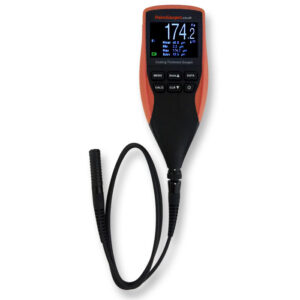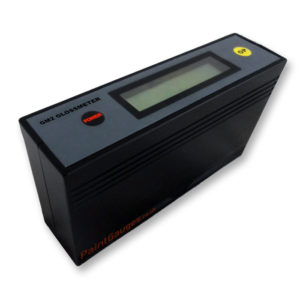Research has estimated the automotive coatings market to be valued at $22 billion in 2015. Car, truck and other vehicle bodies are usually made of metal (typically steel, but increasingly also aluminium). These metals require coatings (almost exclusively paint) to provide corrosion protection but also for aesthetic purposes. After application, measurement and inspection of coatings is important for quality control purposes.
Multi-stage coating process
Before a car body is painted, the bare metal is typically prepared by dipping it into baths. The resulting corrosion protective layers comprise of a zinc phosphate conversion coating and a subsequent electrostatic deposition basecoat. The zinc phosphate coating is applied to the bare metal shell after it has been degreased. The resulting coating thickness is relatively thin and can typically be in the range of 5-15µm.
The following electrostatic deposition coating will be thicker. While these initial coatings are relatively thin compared to subsequent paint layers, they are nevertheless critical to ensuring the car body is protected from corrosion. Application quality is thus important to vehicle manufacturers, from product quality, customer satisfaction, and warranty perspectives. Manufacturers use computer simulations to predict the coating thickness that will be applied in ed-coat tanks. Real world results can then be empirically tested using a coating thickness gauge.
Application of paint in a factory environment is undertaken by robotic sprayers. This is designed to provide consistency of application, speed of production, and reduced manual labour requirements. The application of paint is also controlled from a quantity and cost perspective. From a quality control perspective, the thickness of paint applied to different areas of new vehicles can be measured with a coating thickness gauge. Factory engineers and technicians can then tune the spray line if and as necessary.
After vehicles leave the factory paint line, they are subjected to human inspection under high intensity lighting. Experienced paint technicians inspect the paint coating for defects, which are marked for manual rectification. Treatment will depend on the nature of the defect, but it will typically involve sanding and polishing of the paint’s clear coat.
-
 FN Ext Coating Thickness Gauge£299.99
FN Ext Coating Thickness Gauge£299.99 -
 GM2 Gloss Meter£379.99
GM2 Gloss Meter£379.99
